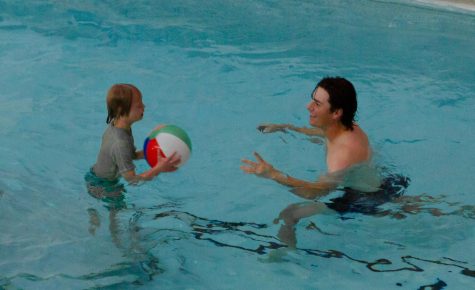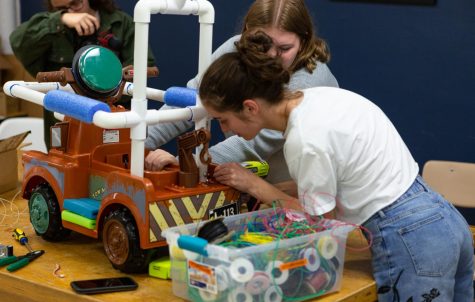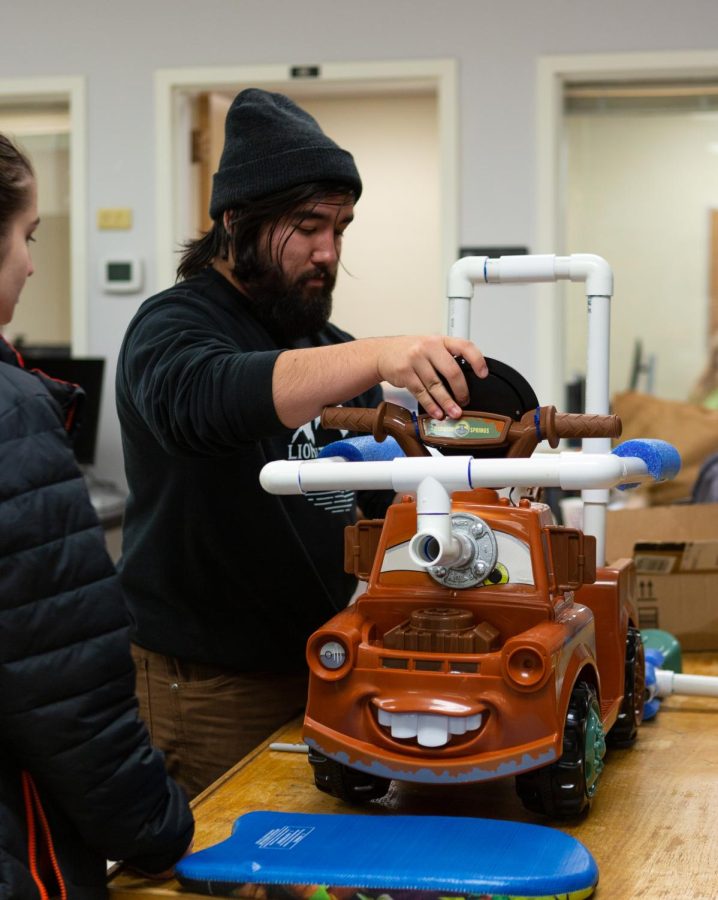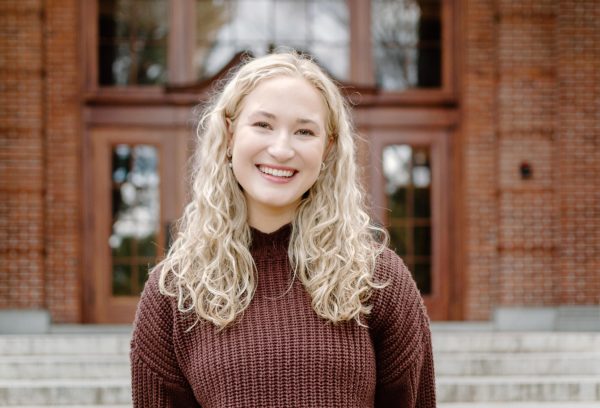Adapted Activity Labs at OSU serve children and individuals with disabilities
Robert Allen, a sophomore majoring in Electrical and Computer Engineering, working to modify a car for their groups’ child on Nov. 8th, at Oregon State University in the IMPACT lab. They work on modifying the cars so that children with disabilities can play with these cars.
November 28, 2022
While some Oregon State University students are relaxing on Friday night, others are in the Women’s Building exercising. Some students are doing math problems in their classes, and others are on their hands and knees cutting electrical wire and PVC pipe.
These students are working to support children and individuals with disabilities, as OSU is home to three adapted activity lab programs: IMPACT, IMPACT for Life and Go Baby Go.
IMPACT: promotes exercise in children with disabilities

According to Jennifer Beamer, clinical assistant professor at OSU, IMPACT is a program that mainly serves individuals with intellectual and developmental disabilities up to age 21.
IMPACT sessions are on Friday evenings in the Women’s Building, and time is spent half in the gym and half in the pool. According to Beamer, there are about 55 attendees, but before COVID-19, approximately 90 individuals with disabilities attended IMPACT each week.
“It’s been something special to look forward to, and seeing her so happy when we go there. And then we also get time with our five year old,” said Stefanie Trask, a parent with a three-year-old daughter in IMPACT.
A team of graduate students plan each session with undergraduate students according to which individuals will attend and what their goals are for mobility and exercise.
“We’re doing stations that are focused on object manipulation: throwing, catching, striking,” Beamer said. “They might say, okay, we’re working with Jamie on looking at her range of motion. So let’s try this for her.”
IMPACT for Life: lifelong exercise for individuals 21 and older
After an individual is older than 21 years of age, they can join IMPACT for life, which teaches lifelong exercise skills to take further into adulthood and beyond.
“We aim to get them as independent as possible in physical activity, habits, behaviors and things they enjoy, so hopefully exposing them to different physical activity fitness opportunities,” Beamer said.
Go Baby Go: a program to adapt ride-on children’s cars

Founded at the University of Delaware in 2011, Go Baby Go is a class and program where honors students modify ride-on children’s cars according to a child’s needs for mobility.
Sam Logan, associate professor of kinesiology, moved from University of Delaware to OSU and started the Go Baby Go chapter for children in the area.
Go Baby Go’s class includes two sections: a lecture and a lab. In the lecture, students discuss their research article readings about ride-on cars, mobility, technology and their connection to child development and behavior.
The lab section focuses on student groups modifying a ride-on children’s car based on a child’s needs. Each group meets with a family in the Portland area and their child’s clinician, and they formulate an adaptation plan for the car during the rest of the term’s lab section.
One of the main modifications are large, easy to press buttons used to propel the car forward.
“A lot of times these cars will come with foot pedals. And it can be really hard for children with disabilities to press the foot pedal to make it go,” Logan said.
A second common modification is creating low-cost seating supports using PVC pipe, kickboards, and velcro for safety and support.
The reason why these cars are specially adapted is because there is a lack of mobility solutions for a reasonable price. For motorized wheelchairs ages three and above, the base price is approximately $17,000.
“The goal really, is that if a complex medical rehab company were to make a device that could replace the ride-on cars, that was affordable for families,” Logan said.
Instead, Logan believes when Go Baby Go is no longer needed to adapt ride-on cars, his work will be done.
One of Logan’s favorite moments at Go Baby Go was from his early research studies with a girl with cerebral vision impairment.
Her family wasn’t sure how far she could see in front of her, but one day, using her modified car, she spotted an orange cat about thirty feet away and drove over to it.
“It was the first time they really saw she was using her mobility for such a direct action and didn’t know she could see that far,” Logan said. “It really changed the whole perception of the family about what she could see, which led to changes and opportunities for her to use the car. They adopted the cat, and it’s now part of the family.
Many of the children who receive the modified cars are patients at Oregon Health and Science University and their cars are delivered to them at the end of the term.
“Especially for kids with disabilities, it gives a good experience for the college students to be able to work with those kids and know that there’s so many different abilities or personalities that help shape our society,” Trask said.
















































































































